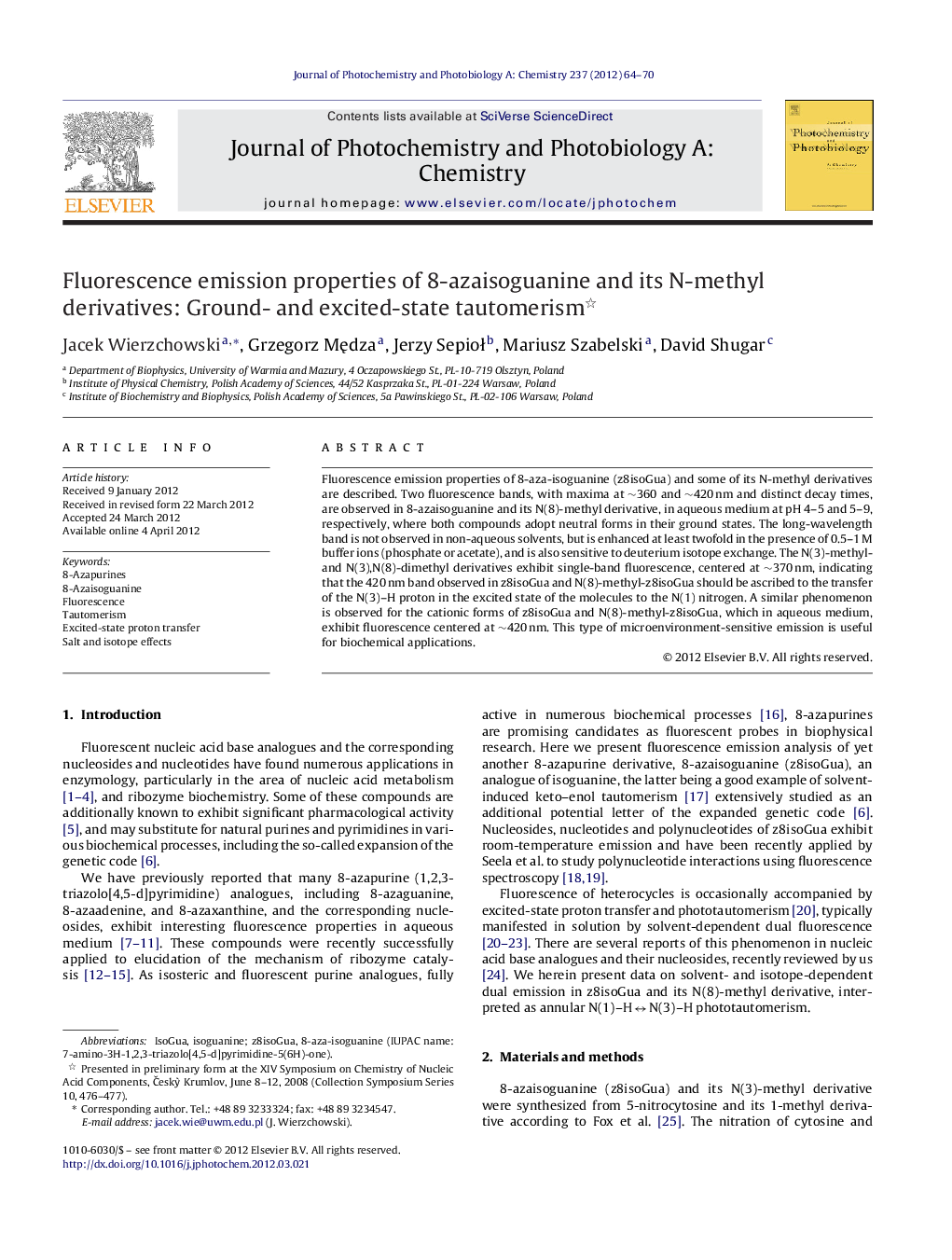| Article ID | Journal | Published Year | Pages | File Type |
|---|---|---|---|---|
| 28314 | Journal of Photochemistry and Photobiology A: Chemistry | 2012 | 7 Pages |
Fluorescence emission properties of 8-aza-isoguanine (z8isoGua) and some of its N-methyl derivatives are described. Two fluorescence bands, with maxima at ∼360 and ∼420 nm and distinct decay times, are observed in 8-azaisoguanine and its N(8)-methyl derivative, in aqueous medium at pH 4–5 and 5–9, respectively, where both compounds adopt neutral forms in their ground states. The long-wavelength band is not observed in non-aqueous solvents, but is enhanced at least twofold in the presence of 0.5–1 M buffer ions (phosphate or acetate), and is also sensitive to deuterium isotope exchange. The N(3)-methyl-and N(3),N(8)-dimethyl derivatives exhibit single-band fluorescence, centered at ∼370 nm, indicating that the 420 nm band observed in z8isoGua and N(8)-methyl-z8isoGua should be ascribed to the transfer of the N(3)–H proton in the excited state of the molecules to the N(1) nitrogen. A similar phenomenon is observed for the cationic forms of z8isoGua and N(8)-methyl-z8isoGua, which in aqueous medium, exhibit fluorescence centered at ∼420 nm. This type of microenvironment-sensitive emission is useful for biochemical applications.
► 8-azaisoguanine and its N(8)-methyl-derivative exhibit dual emission in aqueous medium. ► Dual emission is absent in N(3)-methyl derivatives. ► The dual emission shows marked solvent, isotope and buffer concentration effects. ► Proposed interpretation: prototropic N(1)H ↔ N(3)H phototautomerism.
